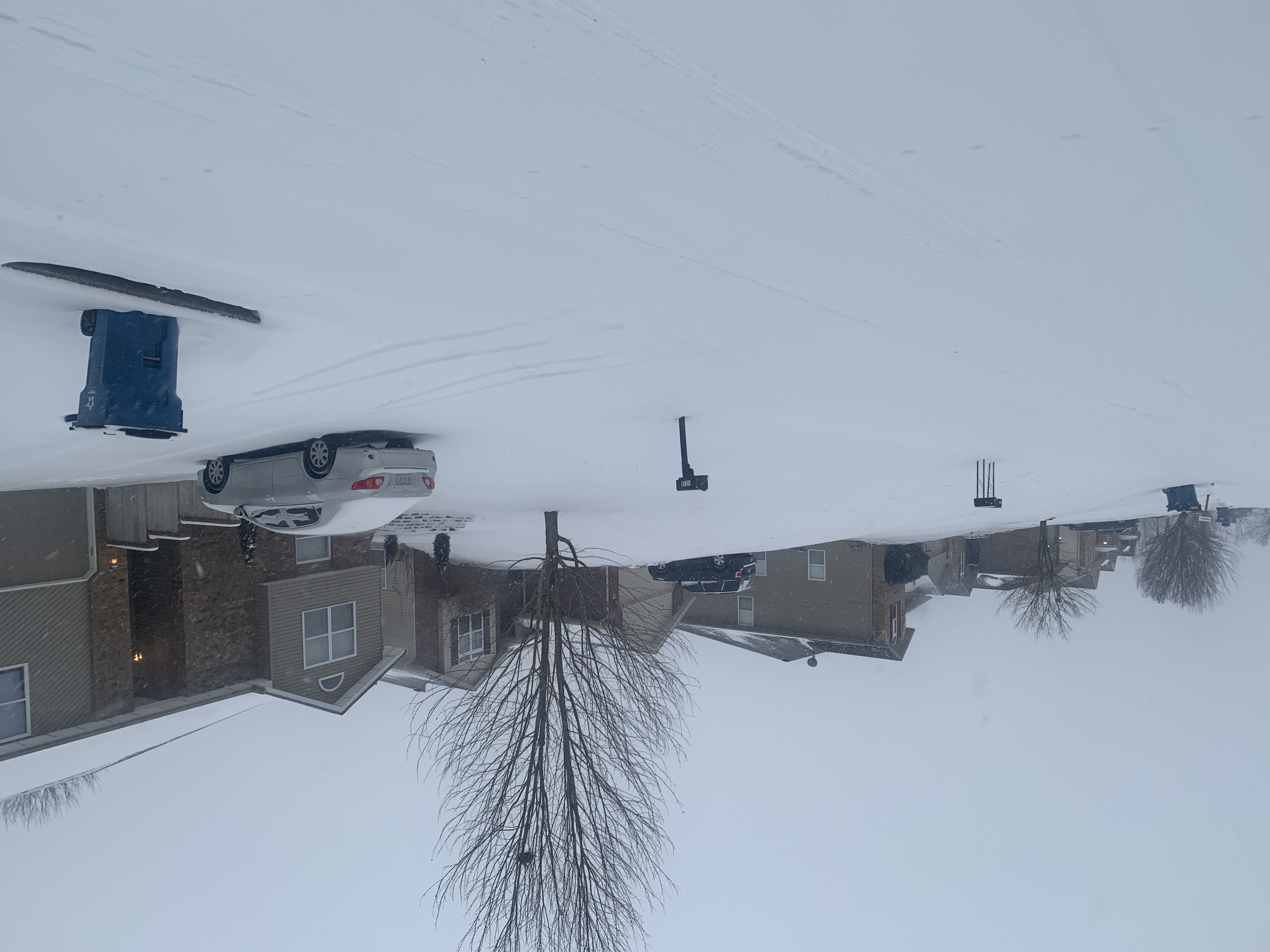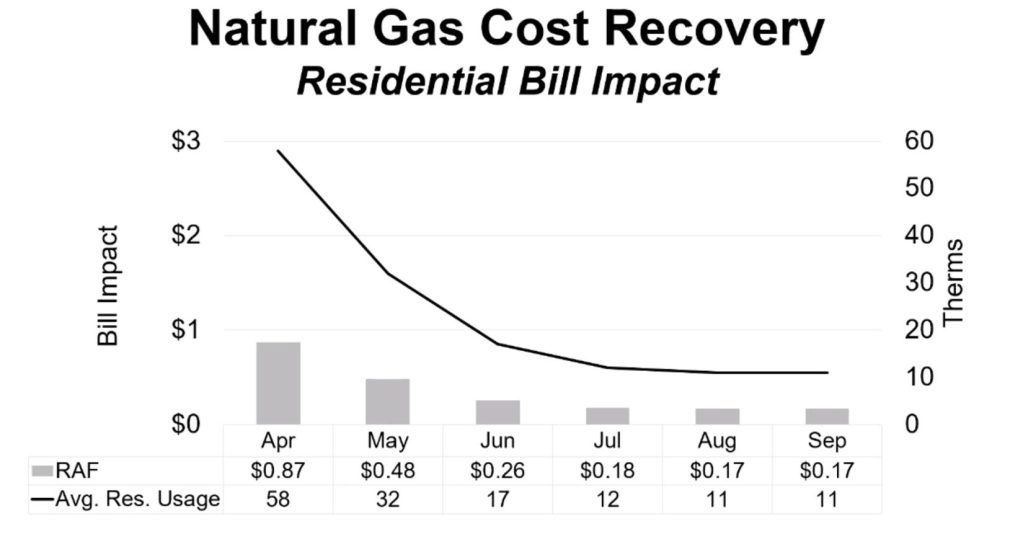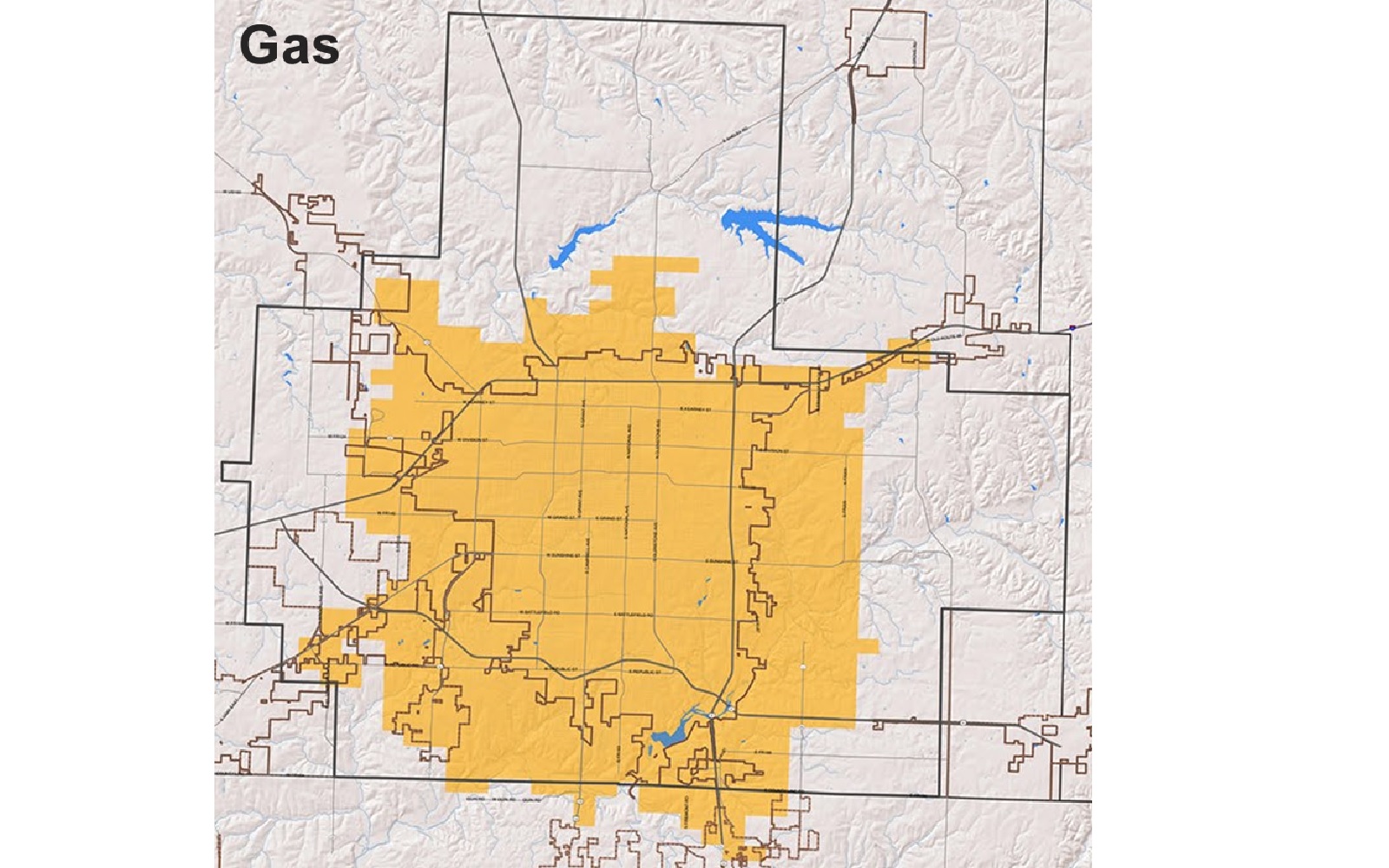As spring springs in Springfield, monthly natural gas bills will drop. And drop. And drop a little more.
Springfield City Utilities points to three factors that should result in lower gas bills for customers. The first is a natural decrease in gas use because the weather is warmer and people aren’t using their gas heaters. The second is an overall decline in the price of natural gas. The third is the payoff and retirement of a fuel adjustment related to Winter Storm Uri.
On Feb. 14, 2021, outdoor temperatures in Springfield reached a high of 6 degrees. Low temperatures between -13 and -10 were reported around Springfield. Users consumed 1.25 million therms of natural gas that day, representing the single-day peak for the year. Springfieldians have been paying for the spike in demand from Winter Storm Uri ever since, on a 24-month recovery schedule to the tune of about 21 cents per month per therm.
Natural gas prices are falling close to about $2 per million British thermal units, or $2 per 10 therms. A year ago, the same amount of gas cost $6. The expected impact to customers is a 27-percent reduction on their monthly bills. City Utilities Director of Rates and Fuels Krista Shurtz explained to the City Utilities Board that paying for Winter Storm Uri was a two-year process.
“We have completed our 24th month of recovering costs from Winter Storm Uri,” Shurtz said. “That was in February 2021, so a significant accomplishment and a very great benefit for our customers going forward.”
The average customer’s bill increased because of Winter Storm Uri by about $40 per month in winter months. Most customers probably won’t notice the long-term impact of the payoff until it’s time to heat their homes again in the fall or winter.
City Utilities Chief Financial Officer Amy Derdall said weather is the key driver of natural gas revenue every year.
“We do sell 75 percent of our gas volumes in the winter months, starting in September through March,” Derdall said.
Fuel adjustment charge will stay on statements
Looking at how much natural gas Springfield customers used at the height of the storm and the bottom of the thermometer in February 2021, and the premium prices City Utilities paid to keep up with the unusually high demand, City Utilities is still short about 1.5 cents per therm in making a full recovery from the storm. That means there will still be a line item on natural gas bills for cost recovery, but it will be 1.5 percent per therm instead of 15 cents.
“It’s a slight charge, particularly compared to what we have had in the past 24 months,” Shurtz said. “It averages out to about 35 cents per month for a residential customer added on to what we project costs to be over the next six months.”
Natural gas prices are trending downward.
“Really great news for our customers — that we’re back in another period of low natural gas prices, and it looks forward really through the end of the year to stay at a lower price than we’ve seen for quite some time,” Shurtz said.
Weather influences income for utilities

(Photo by Rance Burger)
March 2023 was cooler than anticipated, resulting in more heating and more natural gas use across the Springfield metro area.
“Our customers did see warmer days in the month of February, just as they did in January,”
Derdall said. “In March, as you have all recently felt, it’s been cooler than what we anticipated and we have been 3 degrees cooler than normal.”
Expenses to operate the natural gas system are also $3.4 million lower than projected for the year.
For the 2023 fiscal year, City Utilities expected to make $8.6 million in natural gas sales, but has only made $6.8 million in revenue. The sale of electricity also has a revenue deficit of about $4.4 million less than budgeted. City Utilities’ fiscal year ends on Sept. 30.
When it comes to billing, fewer customers are in arrears in 2023. Most of the customers who are behind on their bills are only a month or two months behind on their payments.
“About 83 percent of those are in our 31-60-day category, so that means we will likely collect on those,” Derdall said. “As soon as our customers call us and start working on a payment plan, they move out of the arrears category and go into the current, as long as they are making those payments.”
Global events and long term planning

While the cost of natural gas has fallen, the cost for City Utilities to buy gas is still higher than originally budgeted when the utility’s financial officers planned the year.
“The good news is that was less than what we expected, and again, the better news is we know that is coming down and we are going to take full advantage of that when we fill up our storage,” Derdall said.
Natural gas costs in the U.S. climbed in response to global events influencing the cost of natural gas, specifically, the Russian invasion of Ukraine and a resulting boycott of Russian gas imports by many NATO countries and their allies.
A dekatherm (DTH) is a unit of energy equal to one million British thermal units, or 10 therms. The dekatherm is used in the natural gas industry to measure the heating value of a specific volume of natural gas. A dekatherm is about 910 to 1,026 cubic feet of natural gas, according to the U.S. Energy Information Administration.
City Utilities has the capacity to store 2.4 million dekatherms of natural gas for later use, but doesn't typically store that much gas. The storage volume exceeded 2 million dekatherms in the aftermath of Winter Storm Uri.
“We worked to protect our customers by acquiring firm gas purchases as well as securing some financial transactions to ensure that our customers were protected from extremely high, volatile prices,” Derdall said.
CU announced it will begin purchasing and injecting natural gas into storage for the 2023-2024 heating season, and customers should see today’s prices reflected in lower natural gas bills in the future. The offseason purchase and storage in advance of a higher demand is done to minimize costs to customers and protect against day-to-day fluctuations in the natural gas market.
Springfield’s natural gas numbers
According to its annual budget, City Utilities sold about 15.6 million dekatherms of natural gas in 2022. City Utilities serves about 85,000 gas customers, and about 76,000 are residential customers. Residential customers accounted for about 44.9 percent of Springfield’s natural gas consumption in 2022, according to data from City Utilities.
Each residential user consumed an average of 660 therms of natural gas per year. The average commercial gas customer uses 4,816 therms of natural gas in a year, while industrial consumers use 113,264 therms, according to estimates from Springfield City Utilities.
The average Springfield household spent $986 for natural gas service from Oct. 1, 2021 to Sept. 30, 2022.
The cost of natural gas is also tied to the cost of electricity. Springfield has two turbine generators that run on natural gas at its Lake Springfield generation site. The generators do not run year-round, but run to create supplemental electricity when demand is high.


